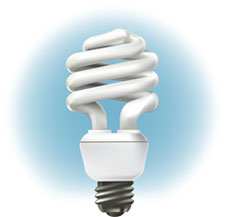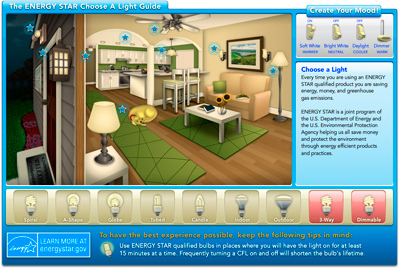Want to save money while lighting your home? Ask for ENERGY STAR. By choosing CFLs that have earned the ENERGY STAR and met the strict performance criteria, you're choosing CFLs that will:
 Save money. Save at least $65 in electricity costs over the course of each bulb's lifetime, or $10-$15 per year, depending on usage.
Save money. Save at least $65 in electricity costs over the course of each bulb's lifetime, or $10-$15 per year, depending on usage.
Save energy. Use about ¼ of the energy to produce the same amount of light as an incandescent bulb.
Save time. Qualified CFLs last about 10 times longer, so you won't be switching them out as often.
Stay Comfortable. Qualified CFLs produce about 75 percent less heat, thus reducing cooling costs and creating a more comfortable environment.
Give you confidence. Thanks to manufacturer-backed warranties you know that the product will perform.
Save the environment. By using less energy you are reducing air pollution and greenhouse gas emissions from power plants.
Learn more about ENERGY STAR qualified compact fluorescent light bulbs, and get some valuable tips before buying one.

ENERGY STAR Choose a Light Interactive Guide
This fun interactive tool will help you identify which bulb you need for which light fixture in no time. Choose your mood by clicking on each light switch to sample different color temperatures.
CFLs and Mercury
CFLs contain a very small amount of mercury sealed within the glass tubing - about 4 milligrams - the amount that would cover the tip of a pen. No mercury is released when the glass is intact (not broken) or in use. Since mercury is a necessary component in all CFLs, the bulbs should be handled responsibly and recycled to prevent the mercury from passing into the environment.

